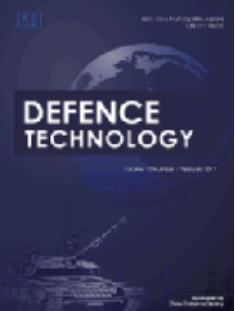45度沉积策略复合材料模具的可持续大尺寸增材制造
IF 5.9
Q1 ENGINEERING, MULTIDISCIPLINARY
引用次数: 0
摘要
在敌对环境中执行军事任务往往成本高昂且难以预测,中队有时会面临孤立和资源短缺。在这种情况下,车辆、无人机和能源发电机中的关键部件可能需要结构加固或修理。本文提出了一种便携式,现场生产方法的模具在具有挑战性的条件下,其中材料供应有限。该方法利用大幅面增材制造(LFAM)和回收的复合材料,从报废部件和废物中采购,作为原料。该研究调查了微观结构的影响,通过粉碎技术,利用显微成像回收。探索了三种潜在的国防部门应用,特别是在航空航天,汽车和能源工业。此外,还研究了关键打印参数,特别是45度角非平行平面沉积对20%玻璃纤维增强ABS力学性能的影响。结果证明了这种制造方法的可行性,与传统方法相比,突出了废料和生产时间的减少。发现较短的层时间可以减少层之间的热梯度,从而改善层的附着力。45度沉积提高了杨氏模量,但略微降低了层间粘附质量。此外,回收引起的纤维长度减少导致材料降解,这与先前的研究结果一致。在实施过程中遇到的挑战包括打印床的零件粘附性差和局部过量材料沉积。总体而言,所提出的方法为模具生产提供了一种具有成本效益的传统CNC加工替代方案,展示了其在资源受限环境下按需制造的潜力。本文章由计算机程序翻译,如有差异,请以英文原文为准。
Sustainable large-format additive manufacturing of composite molds with 45-degree deposition strategies
Military missions in hostile environments are often costly and unpredictable, with squadrons sometimes facing isolation and resource scarcity. In such scenarios, critical components in vehicles, drones, and energy generators may require structural reinforcement or repair due to damage. This paper proposes a portable, on-site production method for molds under challenging conditions, where material supply is limited. The method utilizes large format additive manufacturing (LFAM) with recycled composite materials, sourced from end-of-life components and waste, as feedstock. The study investigates the microstructural effects of recycling through shredding techniques, using microscopic imaging. Three potential defense-sector applications are explored, specifically in the aerospace, automotive, and energy industries. Additionally, the influence of key printing parameters, particularly non-parallel plane deposition at a 45-degree angle, on the mechanical behavior of ABS reinforced with 20% glass fiber (GF) is examined. The results demonstrate the feasibility of this manufacturing approach, highlighting reductions in waste material and production times compared to traditional methods. Shorter layer times were found to reduce thermal gradients between layers, thereby improving layer adhesion. While 45-degree deposition enhanced Young's modulus, it slightly reduced interlayer adhesion quality. Furthermore, recycling-induced fiber length reduction led to material degradation, aligning with findings from previous studies. Challenges encountered during implementation included weak part adherence to the print bed and local excess material deposition. Overall, the proposed methodology offers a cost-effective alternative to traditional CNC machining for mold production, demonstrating its potential for on-demand manufacturing in resource-constrained environments.
求助全文
通过发布文献求助,成功后即可免费获取论文全文。
去求助
来源期刊

Defence Technology(防务技术)
Mechanical Engineering, Control and Systems Engineering, Industrial and Manufacturing Engineering
CiteScore
8.70
自引率
0.00%
发文量
728
审稿时长
25 days
期刊介绍:
Defence Technology, a peer reviewed journal, is published monthly and aims to become the best international academic exchange platform for the research related to defence technology. It publishes original research papers having direct bearing on defence, with a balanced coverage on analytical, experimental, numerical simulation and applied investigations. It covers various disciplines of science, technology and engineering.
 求助内容:
求助内容: 应助结果提醒方式:
应助结果提醒方式:


